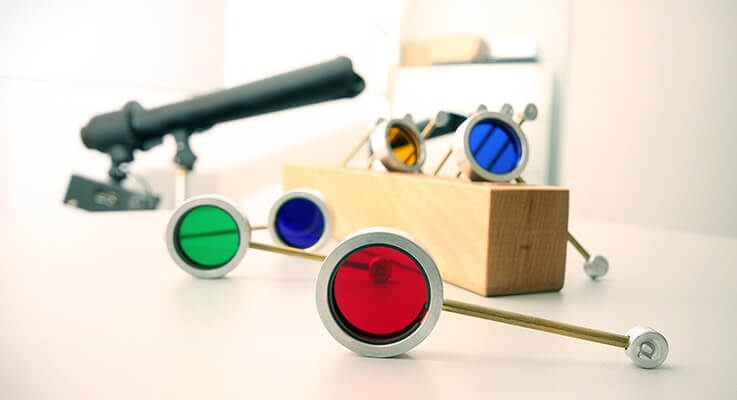
- Syntonic light therapy heals by restoring balance to the nervous system.
- Nervous system balance is vital to all body functions, but especially vision.
- Syntony means balance, balance between the antagonistic processes of the sympathetic and parasympathetic nervous system.
- Syntonics is optometric light therapy specifically through or incident upon the eyes.
- Syntonics is the optometric art of applying specific color frequencies incident upon the eye to restore or enhance certain physiological processes relative to the patient needs.
- Syntonics is different from “White Light” therapy used to treat Seasonal Affective Disorder (SAD).
- White light therapy is a bright white light shown at certain times of the day to help counteract seasonal variations in sunlight.
- Syntonics is a specific optometric prescription or series of prescriptions of color exposures over a defined period of time to restore, compensate, or enhance for some physiological visual imbalance.
- Once balance is restored, the effect is long lasting in most cases.
- Light therapy by itself may be inadequate to address all visual imbalances which may also require glasses, vision therapy, or special optical aids.
Some of the reports on light therapy from our patient’s state:
- Improved visual acuity and contrast
- Improved visual attention
- Improved motivation and productivity
- Improved quality of sleep
- More vivid dreams
- More energy
- More relaxed
- Less eye strain
- Less light sensitivity
- Less allergic sensitivity
- Improved digestion
- Improved appetite and diet
- Some weight loss, despite a greater yet more appropriate appetite
- Less craving for sugar, caffeine, and smoking
- Improved reproductive functions
Many of our patients are surprised at the results, and although everyone is different and there are no guarantees. At the same time, changes may be profound and long standing. Some may temporarily experience a brief cold, disorientation, congestion, a mild rash, and/or some emotional release at some point during the process. Passive children often become less so, requiring more careful attention from their parents for a time. Alcohol, smoking, caffeine, and other excesses or toxins may suppress or overwhelm light therapy’s effectiveness and should be avoided. A healthy diet and sufficient hydration are important to a successful light program.
Brief History
Light has been considered to be a vital part of life since the earliest records.
“Light” is the 46th word in the Bible.
The Egyptians thought of the sun as not only a source of light but also of life.
The Hindu’s used colored light to attain certain moods.
Genesis 1:3-4: “And God said, ‘Let there be light’ and there was light. God saw that the light was good,…”
Plato: “God is truth and light is his shadow”
Link: www.csovision.org
